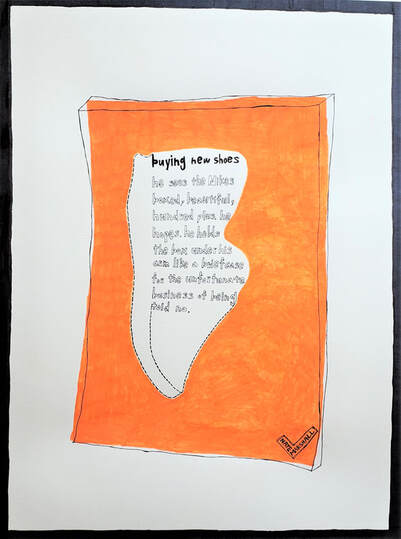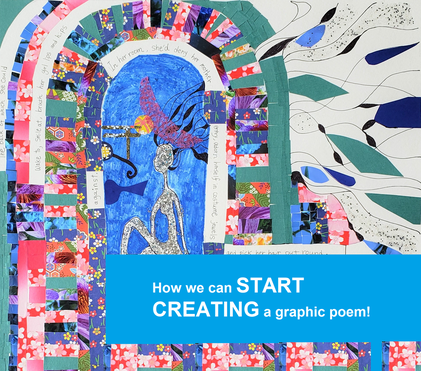|
#RHINOArt2Art's submission is open and we had the first editorial meeting. One thing I realize is poets are seemingly more open to visual explorations of their medium - - i.e. poetry formats: erasure, Golden Shovel, centos (see the previous craft essay) - - than before. Graphic / visual adaptations are not only fun for creators, but they also push their way of thinking about the poems they read and what potential lies in various creative approaches. We do not have a clear rule for visual adaptations like Golden Shovel and centos do. Visual adaptations have more varieties of final products like erasure techniques. But I believe that sharing my process notes may be useful to our community as a springboard to thinking visually, and making more exciting graphic adaptations. The rules for the Golden Shovel: (From Writer's Digest)
As you may or may not know, #RHINO Art2Art is an initiative to pair poems in RHINO Poetry's archive with graphic art, with a view to highlighting poets of color, and to draw more attention to our beautiful archive, thanks to our tireless interns. Between July and August 2020, I had a test-run for this project. I created three adaptations and recruited a handful of poets who were interested in creating various examples before the open submission. The following is my adaptation of Nate Marshall's "buying new shoes". buying new shoes When I read this poem for the first time, I saw many possibilities for images from Marshall's words, such as Nikes boxed, hundred plus, under his arm like a briefcase... This is a short poem, but it is full of striking imagery about a young male who wants expensive shoes. I also thought that the way the poems are arranged on the pages are of significant beauty. I could separate words and images to create a new visual adaptation; however, I did not want to disturb the line-breaks. The poem has a certain cadence. If you read it aloud, it is obvious. Therefore, I decided to keep all the words and play with the shape of its body, the iconic Nike box and shoe cut-out. The white dots represent the shoes that the speaker could not own. Meditating with Marshall's poem was a pleasant time for me. Though this poem is short, Marshall's work left a strong impression on me. It was his super poetic power. I always feel anxiety when sharing visual adaptations of a poet's work to them. But later, I heard from José Olivarez that he and Marshall had a long discussion about the line-breaks. You have no idea how much I was thrilled when I learned of that. #RHINOArt2Art
An Ongoing Celebration of RHINO’s Online Archives Comments are closed.
|
Archives
July 2024
|
フジハブ
Welcome to FUJI HUB: Waystation to Poetry, Art, & Translation. This is not your final destination. There are many links to other websites here, so please explore them!
Welcome to FUJI HUB: Waystation to Poetry, Art, & Translation. This is not your final destination. There are many links to other websites here, so please explore them!
What are you looking for?
FUJI HUB Directory
Popular Sites:
Gallery of Graphic Poems
Working On Gallery
(Monthly New Article by Writers & Artists)
About Naoko Fujimoto
Contact
Naoko Fujimoto Copyright © 2024
FUJI HUB Directory
Popular Sites:
Gallery of Graphic Poems
Working On Gallery
(Monthly New Article by Writers & Artists)
About Naoko Fujimoto
Contact
Naoko Fujimoto Copyright © 2024




